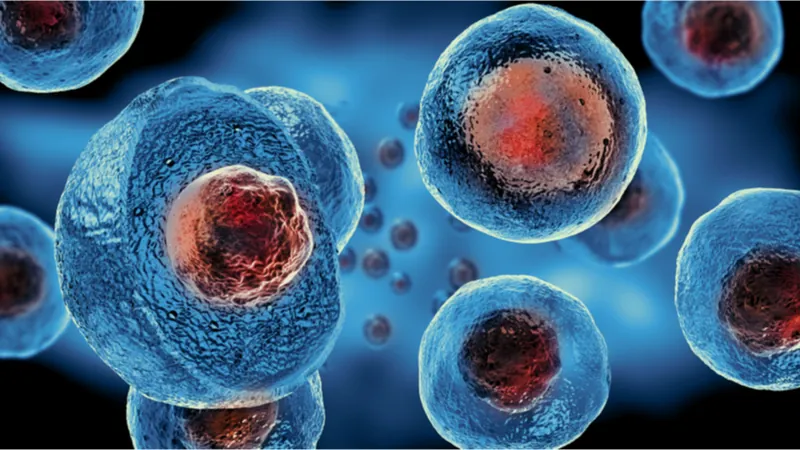In a preprint showcased in bioRxiv, scientists have shown that a single cycle of partial cellular reprogramming can reverse multiple age-related changes in mice.
Starting from a blank slate
As was first shown in 2006 by a group led by Shinya Yamanaka, introduction of four transcription factors (proteins that influence gene expression) can make differentiated cells revert to a pluripotent, stem-cell-like state [1]. These four Yamanaka factors are abbreviated as OSKM. Since then, other combinations of reprogramming factors have been suggested, but the four basic Yamanaka factors still attract most of the interest.

Read More
On their way back to pluripotency, cells become rejuvenated, in much the same way that an aged egg cell gives rise to a brand-new organism. Scientists have been trying for years to use Yamanaka factors to rejuvenate somatic cells but without making them lose their cellular identity, as this can lead to cancer and the formation of teratomas, ghastly tumors consisting of cells of multiple types [2]. This so-called partial reprogramming is one of the most coveted goals in geroscience, pursued by both Google’s biotech company Calico and the newborn Jeff Bezos-backed Altos Labs.
What can one cycle do?
Partial reprogramming via several cycles of OSKM induction has been attempted with encouraging results, such as a significant lifespan extension in progeric mice [3]. In this new pre-print paper, a group of researchers studied the effect of a single such cycle, using several techniques. First, they analyzed methylation patterns of DNA that strongly correlate with aging, which is the basis of methylation clocks that measure biological age. Second, they studied the transcriptome – how a cycle of reprogramming affects gene transcription. Finally, they measured the levels of several metabolites in the blood serum.
This research, which is still waiting to be peer reviewed, was done on a strain of genetically modified mice with additional copies of OSKM genes that can be transiently turned on by the drug doxycycline. The researchers treated 55-week-old mice (a solid middle age for these rodents) with a relatively low dose of doxycycline for one week and then followed them up for another four weeks. As controls, they used age-matched mice that had not undergone doxycycline treatment along with young mice.
Interestingly, in these genetically modified mice, OSKM genes react to doxycycline differently in various tissues. The pancreas is the most responsive organ, with OSKM expression rising sharply with the commencement of the treatment. Indeed, the results of the treatment were also most pronounced in the pancreas, but even there, it did not lead to irreversible morphological changes such as teratoma formation.
Rather than using one of the established methylation clocks, the researchers first compared the methylation patterns of old and young mice. Clear differences were detected, with the methylation profiles of old OSKM-treated mice falling between those of young and old untreated animals. 36% of the age-related methylation changes identified in the study were reversed by a single cycle of OSKM induction.
OSKM against the hallmarks of aging
The scientists then analyzed the transcriptomes of young versus old mice and identified differentially expressed genes. Yet again, old OSKM-treated mice landed between young and old controls, indicating partial rejuvenation. Most genes upregulated by OSKM in old mice were those whose expression declined with age, while genes downregulated by OSKM were those upregulated by aging.
The researchers took a closer look at some sets of genes firmly associated with aging processes, such as mTOR signaling. As expected, this gene-set was upregulated in old versus young control mice. Conversely, the gene-set that governs DNA replication was downregulated with age. OSKM treatment reverted many of those changes back to the youthful phenotype. The scientists concluded that OSKM treatment resulted in a “positive reconfiguration of the transcriptome against key hallmarks of aging”.
Spleen, liver, and blood
As mentioned above, pancreas is especially receptive to OSKM induction, but the scientists observed similar, if less conspicuous, patterns in two other organs: the spleen and liver. They also found that OSKM treatment had reversed some age-related changes in the levels of some blood metabolites, such as those involved in collagen production.
Some changes induced by the OSKM treatment were noticeable at its start, while others only began to appear after the treatment ended. Overall, about half of the changes disappeared after 2 weeks. This tells us that some initial effects of transient cellular reprogramming are truly transient and that future treatments based on cellular reprogramming will probably consist of multiple cycles.
Conclusion
If these findings withstand peer review, they will contribute a lot to our understanding of partial cellular reprogramming using Yamanaka factors. As the rapid evolution of biotechnologies makes it easier and cheaper to perform multi-omic analysis, we will be seeing more papers addressing multiple aspects of aging, such as methylation, gene expression, and metabolism.
Literature
[1] Takahashi, K., & Yamanaka, S. (2006). Induction of pluripotent stem cells from mouse embryonic and adult fibroblast cultures by defined factors. cell, 126(4), 663-676.
[2] Abad, M., Mosteiro, L., Pantoja, C., Cañamero, M., Rayon, T., Ors, I., … & Serrano, M. (2013). Reprogramming in vivo produces teratomas and iPS cells with totipotency features. Nature, 502(7471), 340-345.
[3] Ocampo, A., Reddy, P., Martinez-Redondo, P., Platero-Luengo, A., Hatanaka, F., Hishida, T., … & Belmonte, J. C. I. (2016). In vivo amelioration of age-associated hallmarks by partial reprogramming. Cell, 167(7), 1719-1733.




